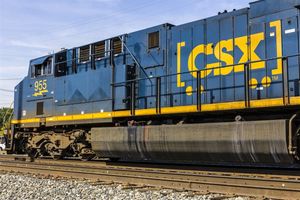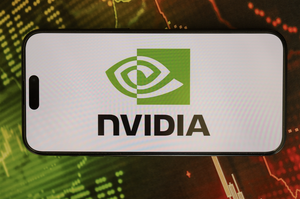
Professional tools and equipment manufacturer Snap-on (NYSE: SNA) missed Wall Street’s revenue expectations in Q1 CY2025, with sales falling 3% year on year to $1.24 billion. Its non-GAAP profit of $4.51 per share was 6.3% below analysts’ consensus estimates.
Is now the time to buy SNA? Find out in our full research report (it’s free).
Snap-on (SNA) Q1 CY2025 Highlights:
- Revenue: $1.24 billion vs analyst estimates of $1.3 billion (3% year-on-year decline, 4.1% miss)
- Adjusted EPS: $4.51 vs analyst expectations of $4.82 (6.3% miss)
- Adjusted EBITDA: $337.4 million vs analyst estimates of $365.8 million (27.1% margin, 7.8% miss)
- Operating Margin: 25.2%, down from 26.5% in the same quarter last year
- Free Cash Flow Margin: 21.5%, similar to the same quarter last year
- Organic Revenue fell 6.8% year on year, in line with the same quarter last year
- Market Capitalization: $16.51 billion
StockStory’s Take
Snap-on’s first quarter results reflected ongoing challenges in its core markets, as management cited declining technician confidence and broad economic uncertainty as key factors affecting demand. CEO Nick Pinchuk explained that while recent pivots to lower-priced and quicker payback items helped cushion the impact, overall sentiment and spending in repair shops remained subdued. Pinchuk added, “What we learned in the period... is we were pivoting to what you would call standard short quicker payback items. But what we found if we tailored things at the bottom end of the bigger ticket items, we could make hay with those as well.”
Looking ahead, management’s guidance is shaped by continued caution around macroeconomic headwinds, particularly the effects of tariffs and political changes on technician confidence. Pinchuk noted that external uncertainties, rather than Snap-on-specific issues, are exerting the greatest influence, stating, “The effects of the last quarter on the general populace, popped off by the tariffs, were so pervasive that they outran our progress.” The company remains focused on refining its product mix and supporting franchisees through targeted promotions and resource allocation.
Key Insights from Management’s Remarks
Snap-on’s leadership identified consumer uncertainty and macroeconomic turbulence as major drivers of the quarter’s underperformance, while also emphasizing areas of operational resilience and potential improvement.
- Technician Sentiment Weakness: Management highlighted a marked decline in technician confidence, attributing weaker demand to “precipitous” drops in consumer sentiment and uncertainty created by political changes and tariffs. This affected sales of both high-ticket and standard tools.
- Shift to Entry-Level Products: The company found some success in shifting its focus to lower-priced, quick payback items, such as entry-level diagnostic tools and tool carts. These adjustments provided some support, but broader market weakness limited their effectiveness.
- RS&I Software Momentum: The Repair Systems & Information (RS&I) segment demonstrated resilience, with software sales outperforming the group’s overall growth. Management credited advancements in natural language processing and AI as helping streamline database development and improve the value proposition for customers.
- Inventory and Manufacturing Flexibility: Snap-on completed an expansion of its Albona facility, allowing it to adjust production toward items with higher demand, like lockers and carts, and reducing backlogs in larger tool storage products. This flexibility is described as an advantage in navigating tariffs and supply chain challenges.
- International Markets Steadier: Management noted that international operations were less affected by the uncertainty impacting North America. Technicians abroad showed greater confidence, and non-U.S. markets experienced steadier performance, partially insulating Snap-on from broader headwinds.
Drivers of Future Performance
Management projects that future performance will be shaped by continued macroeconomic uncertainty, technician sentiment, and the company’s ability to adapt its product offerings and support franchisees.
- Continued Product Mix Adjustments: Snap-on plans to increase development and promotion of lower-priced and quick payback products, aiming to sustain demand in a cautious market environment.
- Franchisee Support and Stability: The company will focus on helping franchisees manage through challenging conditions, providing targeted resources and maintaining cash flow discipline to limit business disruptions.
- Potential Tariff and Policy Impacts: Snap-on recognizes that ongoing changes in tariffs and political policies, especially in the U.S., present risks to technician confidence and demand. Management believes its manufacturing flexibility positions it to respond quickly, but acknowledges these external factors may constrain growth.
Top Analyst Questions
- Scott Stember (Roth MKM): Asked if Snap-on might further pivot to lower-priced items given declining technician confidence. Management said past pivots worked but were “overrun” by broader uncertainty, and future adjustments will focus on entry-level big-ticket items.
- David MacGregor (Longbow Research): Inquired about promotional discipline and response to weaker demand. CEO Pinchuk stressed that while promotions increased, Snap-on “is not out there begging for volume,” and margins remain a priority.
- Gary Prestopino (Barrington Research): Questioned whether declining technician hours reflected a shift from mission-critical to elective repairs. Management suggested the decline is likely due to reticence among lower-credit customers and broader economic apprehension.
- Sherif El-Sabbahy (Bank of America): Sought clarity on demand trends within the Tools Group and whether the shift to lower payback items was intensifying. Management confirmed increased focus on these items but said widespread uncertainty outpaced progress.
- Patrick Buckley (Jefferies): Asked about international versus U.S. sentiment. Management responded that international markets remain more stable, with U.S. confidence uniquely impacted by recent political and economic events.
Catalysts in Upcoming Quarters
In the coming quarters, the StockStory team will monitor (1) whether Snap-on’s continued focus on lower-priced and quick payback products can stabilize or grow sales volumes, (2) the degree to which technician sentiment recovers in response to evolving macroeconomic and policy conditions, and (3) management’s ability to maintain operating margins despite volume pressure. Additional attention will be given to international performance and the company’s agility in responding to tariff-related disruptions.
Snap-on currently trades at a forward P/E ratio of 15.7×. At this valuation, is it a buy or sell post earnings? The answer lies in our free research report.
Our Favorite Stocks Right Now
Market indices reached historic highs following Donald Trump’s presidential victory in November 2024, but the outlook for 2025 is clouded by new trade policies that could impact business confidence and growth.
While this has caused many investors to adopt a "fearful" wait-and-see approach, we’re leaning into our best ideas that can grow regardless of the political or macroeconomic climate. Take advantage of Mr. Market by checking out our Top 5 Strong Momentum Stocks for this week. This is a curated list of our High Quality stocks that have generated a market-beating return of 176% over the last five years.
Stocks that made our list in 2020 include now familiar names such as Nvidia (+1,545% between March 2020 and March 2025) as well as under-the-radar businesses like the once-micro-cap company Kadant (+351% five-year return). Find your next big winner with StockStory today.






